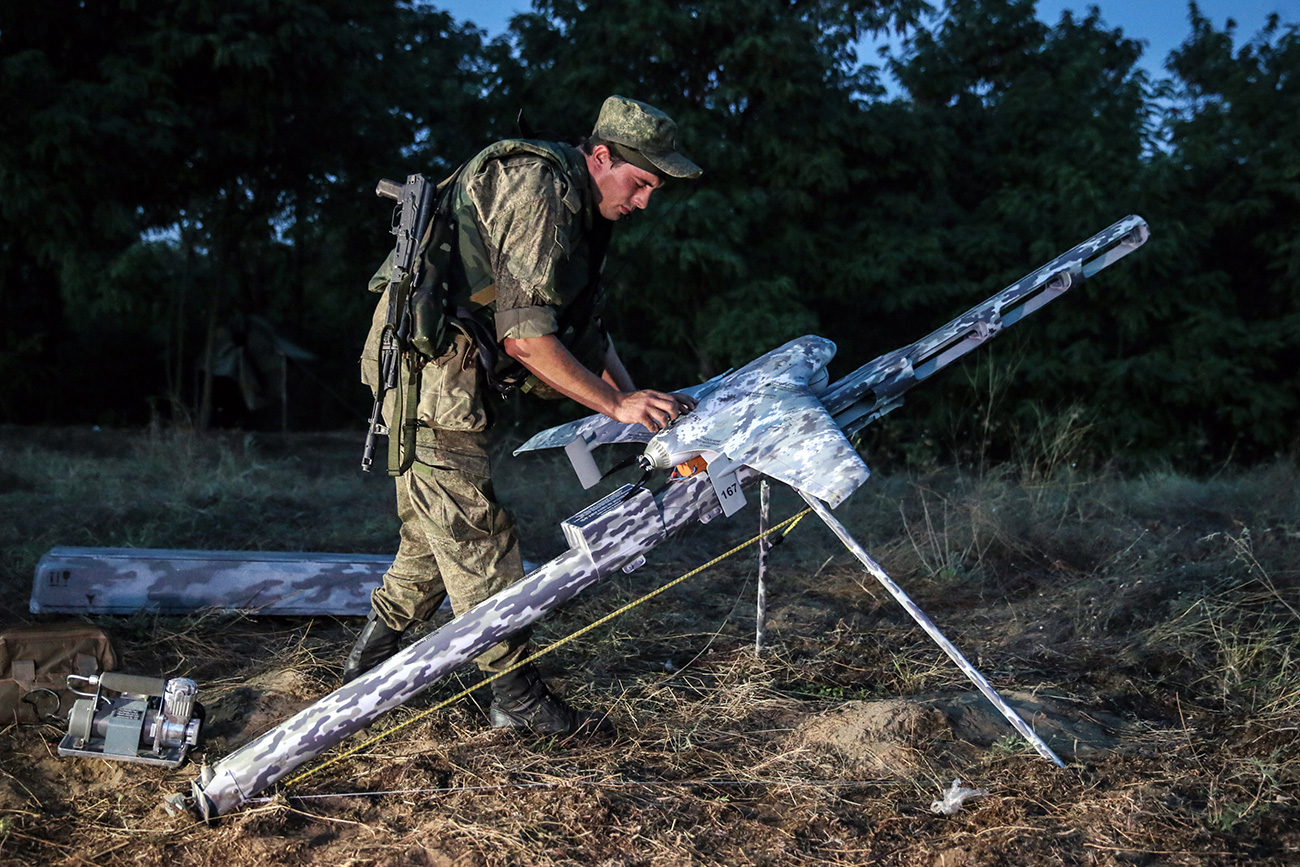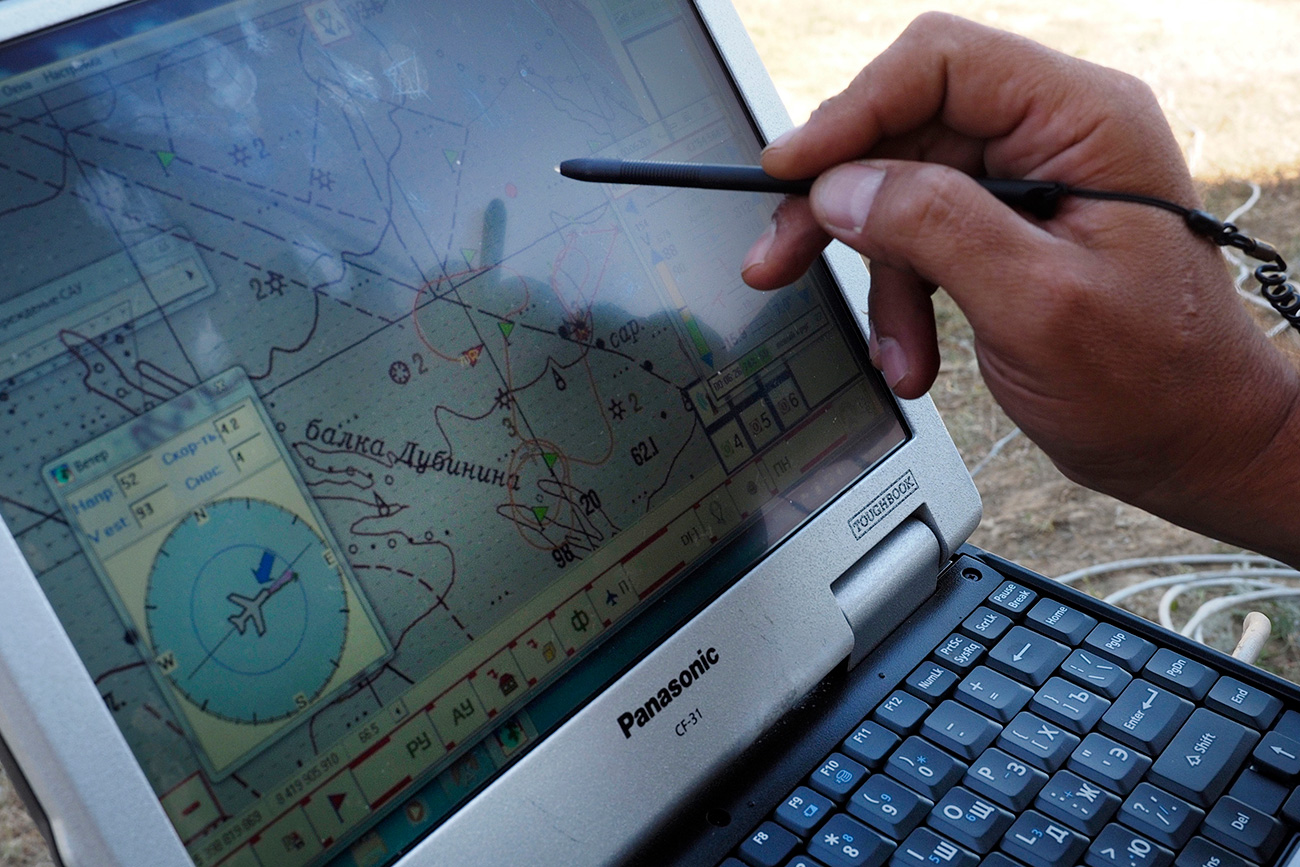Russia’s digital doomsday weapons: Robots prepare for war

"Software has been developed to allow a group of six aerial vehicles to be controlled simultaneously." Photo: An air drone being launched during tactical exercises held by motorized infantry units of Russia's Southern Military District.
Sergei Savostyanov/TASSWhile Russian army drones are only learning to attack the enemy, cruise missiles have been able to do so for a long time. The most modern smart missiles of the Granit and Oniks classes can pound the enemy using artificial intelligence and quick thinking.
Attack flock
Software has been developed to allow a group of six aerial vehicles to be controlled simultaneously, said Alexander Mochalkin, head of the company, Networkcentric Platforms.
In tests, reconnaissance data was transmitted from different angles and viewpoints to create a 3D model of the terrain. In the future, the "flock" will be able to attack enemy airplanes, helicopters and even cruise missiles.
 At the moment, however, the drones won’t be let loose to fight on their own - their actions are governed by control operators in a command center. Photo: A military exercise held by Russian Southern Military District troops in Prudboi firing range. Source: Dmitry Rogulin/Dmitry Rogulin/TASS
At the moment, however, the drones won’t be let loose to fight on their own - their actions are governed by control operators in a command center. Photo: A military exercise held by Russian Southern Military District troops in Prudboi firing range. Source: Dmitry Rogulin/Dmitry Rogulin/TASS
Such a system is based on a relatively simple principle - the drones are fitted with a computer and special software capable of assessing the behavior of a drone in relation to other members of the "flock," as well as several sensors for spatial orientation.
At the moment, however, the drones won’t be let loose to fight on their own - their actions are governed by control operators in a command center. It's not clear when the technology will improve.
"Even though the problem of self-organization by robots has been resolved, to get them to take independent decisions amidst an ever-changing situation has so far proved elusive. This means that what is proposed is merely a robotized system. In other words, it's incapable of carrying out a mission without the involvement of a human control operator," Mochalkin added.
Smart missiles
In the 1970s, Russian scientists developed the first missiles with artificial intelligence for the Strategic Nuclear Deterrence Forces and in naval armaments. They included the Russian Navy's most secret anti-ship cruise missile - the Granit (NATO name: SS-N-19 Shipwreck). This was the first weapons system with artificial intelligence akin to human intelligence. Thanks to its speed, maneuverability and power it was dubbed the "carrier killer." It's installed on Project 1144 Orlan nuclear-powered missile cruisers, and Project 949A Antey attack submarines.
"The key feature of the missile's homing system is that electronic and physical profiles of the foreign warships are programmed into its computer," said Vladimir Polyachenko, a staff member at the museum of the Scientific-Production Machine-Building Association, the public company where the system was developed.
He added that the system takes into account not just the dimensions and contours of a ship’s deck structure, but also data about the various electromagnetic and other fields unique to particular classes of vessels.
"The computer also has tactical information on different ship cruising formations, enabling it to determine accurately what's in front of it - escorts, or a carrier group, or an assault force - and then to attack the main targets," said Polyachenko.
Cruisers and submarines are equipped with 24 Granit missiles, which are released in a volley. The first missile to leave its tube "waits" for the others until all, including the 24th, have completed maneuvers in the vicinity of the launch spot.
"When all missiles are in the air they make a formation and begin to attack, but only one 'sees' the target, and this missile then "informs" all the others of the latter's location and nature. It proposes attack tactics and allocates roles: who attacks, and who sacrifices itself by drawing the enemy's anti-missile defenses. After that, the battle commences," said Polyachenko.
After hitting the main target, the missiles promptly reassign tasks and start to destroy other targets, one after another in order of importance.
It's impossible to escape a "flock" of Granit missiles because they travel at supersonic speed, and perform fast and furious maneuvers, making them practically invisible to modern radar systems. An attack can only be detected visually, by which time it's too late to take defensive measures.
Replacing Granits
The Russian Navy has already started replacing the Granit with the latest P-800 Oniks missiles (NATO name: SS-N-26 Strobile). They're smaller than the Granit but have inherited its artificial intelligence system.
According to Deputy Defense Minister Yury Borisov, the Russian Defense Ministry will modernize the Project 949A Antey submarines and the Project 1144 Orlan heavy nuclear-powered missile cruisers. Each of the missile tubes will now be fitted with three Oniks launch packs in place of the 24 Granit missile systems.
As a consequence, the weapons load of vessels will increase from 24 to 72, and they'll all be new supersonic cruise missiles, turning vessels into genuine maritime fortresses sailing the oceans. The first Project 1144 cruiser, the Admiral Nakhimov, is already in dock at Severodvinsk waiting its new weapons, while the first Project 949A submarine is in dock in the Far East.
Read more: Virtual trainer for robots and drones developed in Russia>>>
If using any of Russia Beyond's content, partly or in full, always provide an active hyperlink to the original material.
Subscribe
to our newsletter!
Get the week's best stories straight to your inbox
